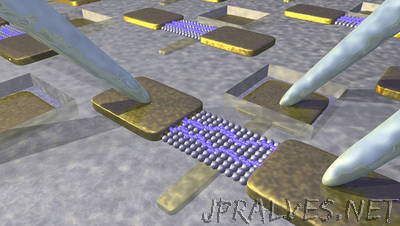
“Transistor are electrical components that are direct electronic signals and enable us to process information. Millions of them are built into every single computer chip, and they are usually made out of the semiconductor material silicon. Dr. Christian Klinke’s research group at the Institute of Physical Chemistry at the University of Hamburg recently succeeded in the production of nanoparticles. The new material lowers production costs and facilitates the use of energy-efficient applications. The research results are published in the current issue of Science Advances. Transistors are electrical components with which currents can be controlled and information processed. They are used billions of times on every computer chip and consist mostly of the semiconducting material silicon. The group around PD Dr. Christian Klinke from the Institute for Physical Chemistry at the University of Hamburg has now succeeded in producing transistors made of metal nanoparticles, which allows a more economical production as well as energy-saving applications. The results were published in the current issue of the scientific journal “Science Advances”. Scientists have succeeded in producing transistors that are based on a completely new principle: instead of semiconductors, they use metal nanoparticles that are so small that they no longer show their metallic character under current flow, but have an energy gap that is larger than that of the semiconductor Is caused by the repulsion of the electrons among one another, which gives them semi-conductor-like properties. With a control voltage, this gap can be moved energetically and the current flow can thus be switched on and off as desired. These nanotransistors have several advantages that make them interesting for commercial applications: the chemical production of the metal nanoparticles is very controllable and scalable and provides very small nanoparticles that can be stored in solvents and easily further processed. In contrast to previous similar approaches, the nanoparticles are not installed as individual structures, rendering the production very complex and the properties of the corresponding components unreliable, but as thin films having only a single layer of nanoparticles. Thus, the electrical properties of the components are not only adjustable and almost identical, but the transistors are also less expensive. In addition, they function not only at low temperatures, but also at room temperature. “Our work shows that there are alternatives to the traditional transistor concepts, which can be used in various special applications in the future,” says Christian Klinke. “The components developed by us can not only be used as transistors, but they are also very interesting as chemical sensors, since the interstices of nanoparticles to nanoparticles react highly sensitively to chemical deposits or attachments. The application as transistors and sensors opens up new research perspectives. “”
